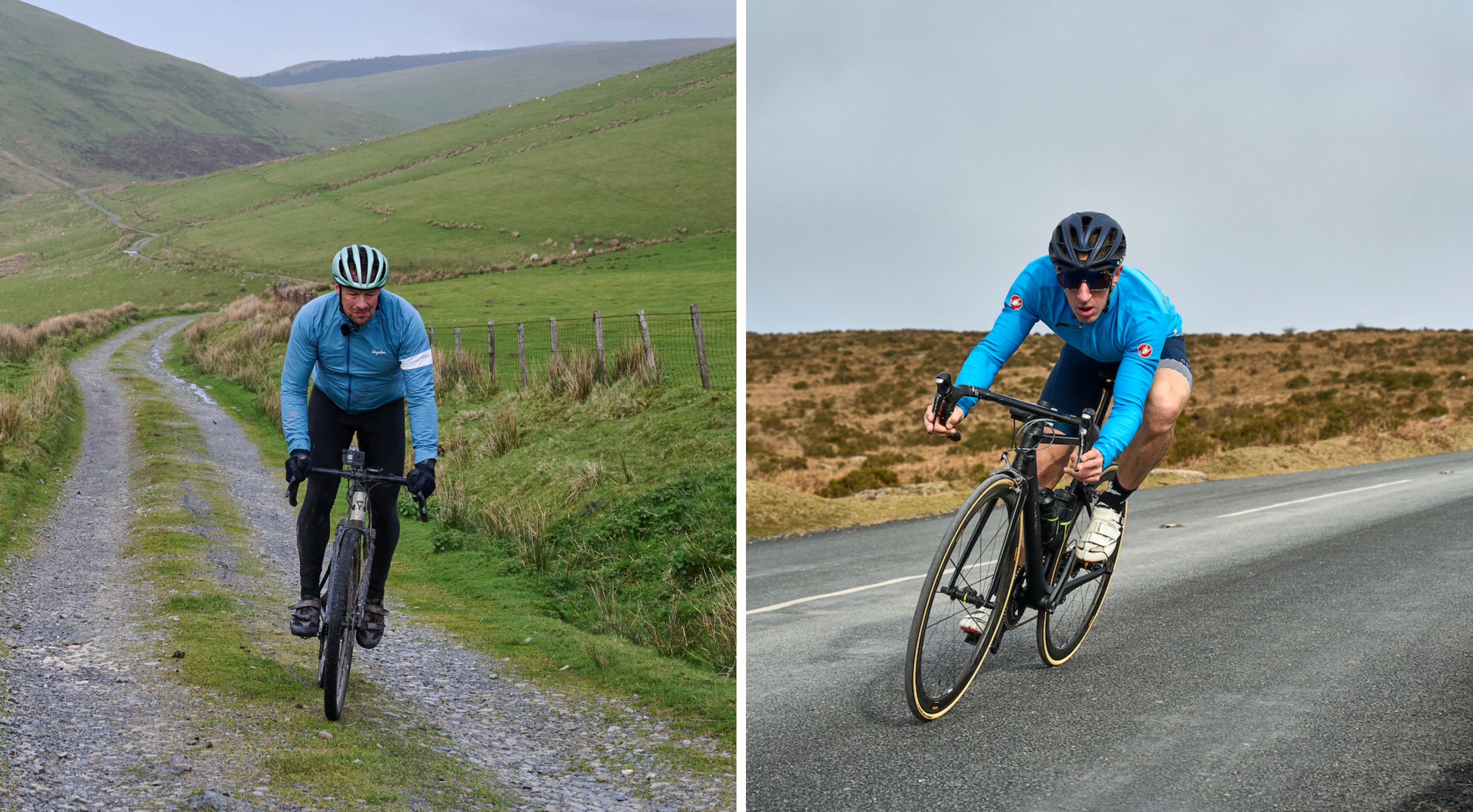Will I get fitter biking on-road or off-road?
We delve into the pros and cons of the different riding surfaces with the help of British Cycling cyclo-cross manager Matt Ellis


Ride a bike, get fit, right? Simple as that. But when it comes to fitness, is on-road or off-road better? How does terrain affect gains? Not forgetting, of course, everybody's favourite hurt locker, the indoor trainer.
The road has long expanses of the black stuff, peppered with all sorts of gradients that allow you to put out measured efforts and readily rack up four or even six hours of riding with little let-up. These are the sorts of rides that road racers swear by.
But imagine that same four or six hours done off-road. Given the extra energy expended wrestling the bike across technical sections, or pounding up the kind of very short, steep, and technical inclines that you don't find on tarmac, would the output – the training load – be ramped up another level?
And then there is our old sweat-inducing friend, the indoor trainer. Where there is no freewheeling allowed and workouts tend to involve unpleasant forays to the edge of our physical abilities and beyond.
"There's loads of aspects… I think mixing it up is best," says British Cycling's cyclo-cross coordinator Matt Ellis.
"For me this weekend, I did a road ride on Saturday, but then I did a sort of gravel/mountain bike type ride on Sunday. I try to keep a bit generally fit. I'm not 'bike [racer]' fit any more like it used to be, but I find mixing it up gives me a better sort of fitness."
There are useful facets to both on and off-road, Ellis says, with road better for certain bike-specific fitness aspects, and off-road offering a great all-round workout which can have extra value for riders aged 40 and above, as well as safety and enjoyment benefits.
The latest race content, interviews, features, reviews and expert buying guides, direct to your inbox!
"To get off onto trails, it's nicer, quieter, but you're getting a more general workout," he says. "You're working more parts of your body, if I'm working pretty hard… there's a lot of ups, there's a lot of downs, and it's a bit more interesting sometimes.
"For me, road rides have a place," he adds, "and I think it's better for speed, endurance sometimes. Specific on-bike muscular strength is better on a road bike, and you can control it more, with over-geared seated type efforts."
For those riding for leisure and fitness rather than competition, off-road could well be the place to spend most of your time, suggests Ellis. But if it's that final hit of top-end speed that you're looking for, you might want to look to the tarmac.
"For a general bike rider, you can do a lot more work in an hour's off-road ride than you can in an hour's road ride, I believe.
"There's a lot more of your senses you're using – your concentration and your skills, which is a big factor, but also you've got to press on," he says, pointing out that even a flat off-road surface tends to require more pedal power than a smooth tarmac one.
Off-road riding makes it harder to rely on equipment choices for extra speed too, Ellis points out.
"On the road, a lot of the speed will come down to the equipment – you put on fancy wheels, you're going to go faster. Whereas off-road you put on fancy wheels, you're just going to make a nice noise, but you probably won't be much faster."
However, he says, you can have too much of a good thing.
"You can do too much off-road," he says. "I think particularly some young riders do a lot of mountain biking, and they become very focused on that. They become very strong, very technically good, but not very fast. There's a real subtlety to that speed.
"When they come to [cyclo] cross for example, they're technically really good, and they are strong, and when it's muddy and slow you don't notice it as much," Ellis explains. "But when the racing gets faster, they can't translate that strength into going quick enough and the race sort of leaves them behind."
For those coming from a road background who might be used to averaging 25-30kph over distances of 100km and more, riding off-road can feel like being brought down to earth with a bump, with both distances and average speeds plummeting. However, Ellis points out, it is workload that tells the full story.
"You're looking at the computer going 'my average speed's crap'," he says. "But then you have to take a step back and go, 'I couldn't have gone any faster'.
"You're probably gonna have to look at it a bit more on feel. You're not going to do 30kph average, but you physically have to examine how you feel and be a bit more in touch with that."
If gravel or off-road is more your thing, that is where the indoor trainer can come in especially handy for those final speed-based percentage points, Ellis says.
"If you're doing loads of off-road stuff, then there's a place for the indoor trainer, where you can replicate the speed and that real measured on-the-bike effort – there's probably a place for that from a coaching perspective."
Riding indoors offers a safe and controlled environment that is perfect for replicating high-watts, high-speed intervals that can add a turn of pace that can come in handy on group rides and races.
In conclusion, if you're after very controlled and specific numbers, road, and indoor, is probably where you need to search out those gains. But if you're after a rounded workout that brings in more fitness facets, head on to the rough stuff.
It's also worth saying that specificity tends to be key – if you're training for a road race, you're probably going to want to err on the side of long, hard road rides. Even if road racing is and never will be your bag, if you're mainly riding off-road and you want to add a layer of speed, the road and even the indoor trainer is a great place to do that.
One of the most important aspects of bike riding is enjoyment of course, and there's a lot to be said for heading to the surface that puts a smile on your face. That means you're probably going to be out there more often, and as Ellis says, you'll probably be "training without realising it".
And that, surely, has got to be the best way to train.
After cutting his teeth on local and national newspapers, James began at Cycling Weekly as a sub-editor in 2000 when the current office was literally all fields.
Eventually becoming chief sub-editor, in 2016 he switched to the job of full-time writer, and covers news, racing and features.
He has worked at a variety of races, from the Classics to the Giro d'Italia – and this year will be his seventh Tour de France.
A lifelong cyclist and cycling fan, James's racing days (and most of his fitness) are now behind him. But he still rides regularly, both on the road and on the gravelly stuff.
You must confirm your public display name before commenting
Please logout and then login again, you will then be prompted to enter your display name.
